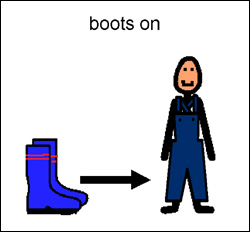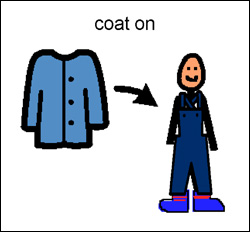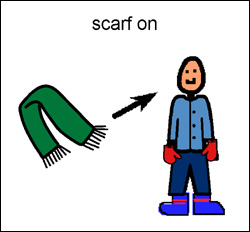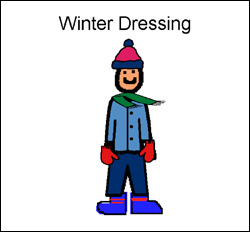In this workshop we’ll take a closer look at the process of identifying and placing children needing extra help within the education system in the province of Ontario
Individual Education Plan (IEP)
This workshop provides an introduction to IEP’s
Alzheimer’s disease and other dementias

Dementia is a syndrome consisting of a number of symptoms that include loss of memory, judgment and reasoning, and changes in mood and behaviour. These symptoms may affect a person’s ability to function at work, in social relationships or in day-to-day activities.
Alzheimer’s disease, the most common form of dementia, accounts for 64% of all dementias in Canada. (Material sourced from Alzheimer Society of Toronto https://alz.to/ )
Alzheimer’s disease and Dementia (workshop)
An introduction to Alzheimer’s disease and dementia including what is Alzheimer’s disease, the differences between Alzheimer’s disease and dementia and some of the signs and symptoms of Alzheimer’s disease.
Dementia: Changing Assumptions
Improve your understanding of dementia & Alzheimer’s disease, best practices and the resources available for supporting individuals with developmental disabilities exhibiting dementia.
Articles
What is Dementia
Dementia is a syndrome consisting of a number of symptoms that include loss of memory, judgment and reasoning, and changes in mood and behaviour. These symptoms may affect a person’s ability to function at work, in social relationships or in day-to-day activities. http://alz.to/learn-about-dementia/what-is-dementia/
What is Alzheimer’s Disease
Alzheimer’s disease is a progressive, degenerative disease of the brain, which causes thinking and memory to become seriously impaired. It is the most common form of dementia. http://alz.to/learn-about-dementia/alzheimers-disease/
Alzheimer’s Treatment
While there is currently no cure for Alzheimer’s disease and no treatment that will stop its progression, there are several medications available that can help with some symptoms. These medications can slow down the decline of memory, language and thinking abilities. http://alz.to/learn-about-dementia/alzheimers-treatment/
Early detection screening tool
U-First Training
U-First! is a proven and effective approach to working with people with dementia. Through dialogue and a case-based approach, learners will have more confidence in working with people with responsive behaviours. Training is especially designed for people working in community care, acute care, and long-term care. For more information visit
The Alzheimer Society Music Project
The Alzheimer Society Music Project was created in response to overwhelming evidence showing the beneficial effects of music and stimulation on people living with dementia.
Through the Music Project, personalized playlists are provided to support a person living with dementia and improve their quality of life at no cost to eligible families.
Project Participants Receive: One iPod & charging accessory, One set of over-the-ear headphones and free music setup. http://musicproject.ca/
Alive Inside Clip of Henry
This is an excerpt from Alive Inside, a documentary about the Music and Memory nonprofit project, a film by Michael Rossato-Bennett. https://www.youtube.com/watch?v=QG7X-cy9iqA
The Toronto Dementia Network
The Toronto Dementia Network collects, organizes and disseminates information about dementia related services and events in Toronto. It is a widely used resource directory funded by the Toronto Alzheimer’s Association. https://tdn.alz.to/
Health and Wellness

Everyone’s health matters
Good health is important to all of us. When you are healthy, you can go out with friends and family, do sports, go to school, or work better. People with developmental disabilities are more likely to have illnesses like diabetes, asthma or heart disease than people without a disability.
This video explains how healthy people with developmental disabilities in Ontario are, and what kind of healthcare they get. Not everyone is as healthy as they could be, and not everyone is getting the healthcare that they need.
A Talk About Health, by Health Care Access Research and Developmental Disabilities (H-CARDD), CAMH, 2015 [20 minutes]
Going to the Doctor
The more the doctor knows about you, the more they can help make the visit better for you. Use the “About My Health” form to write down information about you, your medication, and your health before you go see the doctor. You can fill it out yourself or ask someone to help you. Give this form to your doctor or nurse at the start of any healthcare visit. Get the “About My Health” form at the Surrey Place website.
Sometimes it is difficult to remember everything that the doctor said. Ask your doctor or someone who comes with you to the doctor’s office to fill out the “About My Healthcare Visit” form. Write what you need to do after the healthcare visit. Get the “About My Healthcare Visit” form at the Surrey Place website.
Even if you don’t feel sick, it is still important to see your doctor once every year for a check-up. In this video Andrew explains what happens at a healthcare visit and how you can prepare.
Going to the Doctor, by Health Care Assess Research and Developmental Disabilities (H-CARDD), CAMH, 2016 [5:30 minutes]}
Getting a blood test
Sometimes the doctor needs to know more about your health and will ask you to get a blood test at a health lab. This video shows you what exactly happens when going for a blood test.
Many people feel nervous about a blood test. Listen to Francie, who has some tips on how to make getting a blood test easier.
What happens when you go to get bloodwork done, by Surrey Place, 2019, [3:00 minutes]
Getting a Blood Test, by Health Care Access Research and Developmental Disabilities (H-CARDD), CAMH, 2016 [4:30 minutes]
Going to the hospital
When you go to the hospital or emergency room, people will ask you many questions. Bring the “About My Health” form to have all your information ready for the doctors and nurses.
This video explains what happens when you go to the emergency department.
What to expert wen you go to the ER, by CAMH, 2014 [3:10 minutes]
Find more tips on how to prepare for a visit to the emergency department in this checklist.
Prepare a crisis plan with your family or staff for future emergencies.
Health problems you should check for regularly
Sometimes you don’t notice when you are sick. At a check-up you can ask for tests to see if you are healthy. Some important health problems to check for are: cancer, diabetes, pap test. Here are some other things to know about health.
When you are just not feeling happy
Mental health is about how you feel and what you think. Sometimes you do not feel sick in your body, but you just don’t feel happy or enjoy doing activities anymore, or you worry a lot. Listen to a conversation with Special Olympics athletes about what you can do when you don’t feel happy and how you can help others who feel that way. There are 4 videos in this series.
A Conversation About Mental Health with Special Olympics Athletes, by H-CARDD and Special Olympics, 2016}
How direct support professionals can help
We all like to have someone in our corner in difficult situations. Staff can make a big difference in supporting people with developmental disabilities in their health. Learn how to prepare together for a visit to the doctor.
Caption: Everybody Wins: Preparing for a Healthcare Visit. By, Health Care Access Research and Developmental Disabilities and Vita Community Living, 2019 [7:06 minutes]
During the healthcare visit support workers can help with communication. In this video you see how to use the About My Health and My Healthcare Visit forms to share important information with the doctor. Julie also shares how a few accommodations can really be a game changer for her healthcare visit.
Caption: The Game Changer: The Doctor Visit, by Health Care Access Research and Developmental Disabilities and Vita Community Living, 2019 [7:55 minutes]
Support staff can also help track common health issues like bowel movements, sleep and weight using monitoring charts. Download health monitoring charts.
For a complete healthcare toolkit for direct support professionals, visit the website Nuts and Bolts of Health Care. The toolkit includes, videos, tools and newsletters with practical tips on primary and emergency care.
More information
Community Networks of Specialized Care (CNSC): this network links specialized services across Ontario, improves services delivery and builds capacity in the community. The team includes Health Care Facilitators across Ontario. This website has information for service providers and direct support professionals Read more.
Developmental Disabilities Primary Care Program (DDPCP): this program develops guidelines, resources and tools for health care providers and caregivers to improve the health of people with developmental disabilities. Read more.
Health Care Access Research and Developmental Disabilities (H-CARDD): this is a research program investigating the health status and health service use of adults with intellectual and developmental disabilities in Ontario. On this website you will find research information and many clinical tools and health care resources for patients,caregivers, and health care providers. Read more.
Youth
Successfully Navigating Puberty with Teens with ASD and Developmental Disabilities
Presented by Dr. Becca Tagg , North Carolina Licensed Psychologist; Director , Del Mar Center for Behaviour Health
Puberty and adolescence require a new set of skills. This webinar provides a good foundation and tips on how you can help your son or daughter manage and grow through the many changes of the teen years.
Play
From child to adult healthcare
When you turn 18, your health care will change. You will see new doctors and nurses who do not know you so well as the health care team you have been seeing since you were a child. You can prepare for this change together with your doctors and family. Use the {SHARE Transition Checklist} to talk about things that are important to you when you turn 18.
Young Adult Health Transitions: Primary Care, Community Resources and Care Planning
A presentation about the use effective planning and decision-making to improve wellbeing of persons with developmental disabilities during transitions from youth to adult services. Presented by: Angela Gonzales & Lindsay Wingham-Smith. Play video
The health check: What is it and what do staff need to know?
This is a no-nonsense discussion on the importance of the health check and how you as staff can make a difference with the individuals that you support.Read more
Health and Wellness for Staff and Family caregivers
Developmental Sector Professionals’ Stress-related Health
Professional Fatigue: Surviving the Front Lines (Shared Learning Forum November 2013)
Presented by: Angie Gonzales, RN MN Health Care Facilitator, Toronto Network of Specialized Care, Surrey Place Centre
Mindfulness Tools for Social Workers
Professional Fatigue: Surviving the Front Lines (Shared Learning Forum November 2013)
Presented by: Sue Hutton, Community Living Toronto
Mindfulness: Making Moments Matter
Many people have heard about the concept of mindfulness, but are unsure what it means, and why it might be helpful in their lives and/or the lives of the people they support.
Other Resources
Health Booklets
The My Health Booklets are a series of health education booklets produced by Surrey Place Centre and funded by the Ontario Government, Ministry of Children, Community and Social Services. The purpose for the series is to offer guidance to people with developmental disabilities in a clear and simple manner. The series consists of eight booklets now available online, with subjects ranging from general health issues to more specific health topics.
Not Skirting the Issue: Discovering Ways to End Poor Health Care for Women with Developmental Disabilities
Women with developmental disabilities are less likely than other women in Ontario to have a pap smear which is how doctors screen for cervical cancer. They are also less likely to get a mammogram to detect breast cancer. Why does this matter? If we have health problems and they aren’t detected early, small problems can become big ones, and can even lead to death. Every woman has a right to get health care early before problems become too serious. Read more
Movember and Men’s Health: What You Should Know!
While men in general can have health problems that they often ignore because they don’t like to talk about their health and how they are feeling, having a disability makes it even harder. Read more
Medication, Education and Advocacy: Improving How People With Developmental Disabilities Use Medication
Medication use is very common for individuals with developmental disabilities. But medications can also lead to problems when you struggle with how to report whether a medication helps or not, or when others aren’t alert to the impact of the side effects. Read more
Scoop on Poop
Being regular, particularly in adulthood, is an “irregular” conversation starter. It is one of those topics that seem too “private” or perhaps too “stinky” to discuss in public. But the reality is that how we feel each day is closely tied to our bowels. Read more
Building Sensory Gardens, Rooms & Kits: Enhance well-being, develop coping skills and reduce challenging behaviour, through Sensory Engagement
When considering the issue of quality of life for people with developmental disabilities, and particularly with those who have challenging behaviour, it is important to consider the role of sensory
engagement in a holistic biopsychosocial approach. Read more
Primary Health Care of Adults with Developmental Disabilities Guidelines
The Developmental Disabilities Primary Care Initiative has brought together clinicians with expertise in the care of adults with developmental disabilities (DD) to improve primary care and quality of life for adults with developmental disabilities (DD).
With leadership and coordination from Surrey Place Centre, and funding from the Ontario Ministry of Children, Community and Social Services, the Ontario Ministry of Health and Long-Term Care, and Surrey Place Centre Foundation, Guidelines and Tools have been developed to help primary care providers to follow best practices in the care of these patients. These guidelines and tools are utilized in the Training Course for primary care providers that are offered on a yearly basis.
Hurry Up and Wait Your Turn: How to win at the waiting game
The waiting room can be a very difficult and often chaotic environment for anyone. Below are some helpful tips and tricks to help win the waiting game. It is important to remember that the way one can support a person during a doctor’s visit will depend on their individual needs and preferences. http://www.vitacls.org/UserFiles/uploads/files/sss%20vol%207%20issue%203%20-%20ENGLISH.pdf
For other things to know about health
Using emergency services: What clients with developmental disabilities should expect
Jillian Carlyle of the CAMH Dual Diagnosis Service talks about what clients and families should expect and prepare for when going the emergency department. Play video
In Case of Emergency, Please Read: Ideas and Strategies for Supporting People with Developmental Disabilities Receiving Emergency Care
This article offers some practical tips about how to make emergency visits as good as they can be, and also outlines some steps we can all take to reduce the likelihood of having to go to the hospital in the first place. read more
Strategies for caring for people with developmental disabilities in medical settings
Useful strategies to improve communications and gather more comprehensive information on people with developmental disabilities who come to medical settings requiring medical support.
Toronto Central Health Integration Network (LHIN) Overview: Who We Are
After the presentation Kim gives a description about her role as a care coordinator for client’s that receive services/supports through TC LHIN and how this intersects with the developmental sector services/supports.Toronto Central LHIN: Overview who we are
Progress in Disparities of People with Developmental Disabilities In Health Care
Excerpt from “Neurodevelopmental Disabilities” (Let’s Talk: An Open Dialogue on Vulnerability in Toronto Series)
Presenters: Angie Gonzales and Aamir Khan, Community Network of Specialized Care.
Community Networks of Specialized Care
The purpose of the Community Networks of Specialized Care is to enhance service to adults with a developmental disability who need specialized care for co-existing mental health and or/ behavioural issues in Ontario. There are 4 networks: Northern Region, Southern Region, Eastern Region and Central Region. http://www.community-networks.ca
Collaborative Planning for Complex Individuals
Neurodevelopmental Disabilities
Let’s Talk: An Open Dialogue on Vulnerability in Toronto Series:
Through collaboration and coordination, the Community Network of Specialized Care works to build efficient and effective cross-sectorial specialized service systems that support people with a developmental disability and mental health challenges (dual diagnosis) and/or challenging behaviour.
Autism & 90-90-90: Reaching for the Goal
Presenting preliminary findings on ACT’s “ASD & HIV Prevention Needs Assessment” survey and explaining the impact the autism spectrum has on negotiating safer sex, accessing services, and community connection.
Cognitive Impairment related to Narcotic Use
Excerpt from “Neurodevelopmental Disabilities” (Let’s Talk: An Open Dialogue on Vulnerability in Toronto Series)
Presenter: Lisa Orsi, Centre for Addiction and Mental Health (CAMH)
Using Visual Sequences to Teach Self-Care Skills
Learning new self-care tasks such as dressing oneself takes time and practise. A visual sequence is basically a series of pictures showing the steps that are necessary to complete a task.
Breaking a self-care task into several steps (a process also known as task analysis) will make it easier for your child to follow along when you begin teaching him how to do it. As adults, we sometimes forget how many steps are involved in a task because we have been doing it for so long. Let’s take ’brushing teeth‘ as an example. Here are just some of the steps involved: finding one’s toothbrush, getting some toothpaste, opening toothpaste, squeezing toothpaste onto the toothbrush, opening one’s mouth, brushing teeth gently, and rinsing one’s mouth with water. Even a simple task like brushing teeth can be very complex.
Now, list the steps to a self-care task that you would like to teach your child. Once you have the steps listed, make a note of which steps he is able to do and which ones may be difficult. This will help you plan which steps to focus on when you begin teaching.
When creating a visual sequence remember that it is difficult for children (and adults) to absorb more than six or seven steps at a time. Once you have listed the steps of a self-care task you are ready to create a visual sequence. This will help your child:
- Know which objects he needs to complete the task.
- Learn how he can use these objects.
- Understand the sequence of actions he must follow to complete the task.
Types of pictures to use

You can use photos of a sibling completing the self-care task, cut pictures from a magazine, or draw them yourself. You can also visit the Visuals Engine to use picture symbols. Make sure that the pictures are clear and that your child will be able to identify the objects in the photos or drawings. It is a good idea to label each step in the sequence with words as a reminder for everyone involved in your child’s self-care routines. For example, the words “Get toothbrush” can be printed above a picture of a toothbrush. Using the same words to describe the actions will make it easier for your child to learn the steps in the sequence.
Teaching the new skill
When teaching your child a new skill, it helps if the space you are using is organized and free of distractions. For example, in the bathroom, you can set aside a small space in a cabinet or on the counter with the objects your child needs to brush his teeth. Providing him with a colourful toothbrush and special ‘kid-friendly’ toothpaste will help make ‘brushing teeth’ more enjoyable.
Introduce the visual sequence by posting it at your child’s eye level, pointing to the picture of each step, and reading its label before completing the action. This teaches the connection between a specific picture and action. Once your child is familiar with the visual sequence, you can ask him to say or point to the next step.
Some steps of the task may be physically difficult for your child to learn even though he knows what to do. If he becomes frustrated, ask if he needs help and guide him through the step hand over hand. It is OK if you need to help your child with most of the routine. The important part is to praise him for his efforts.
In time, you may notice that your child is able to complete some of the steps on his own and with little supervision. At this time, you can decrease the number of pictures in the visual sequence. For example, ‘get toothbrush and toothpaste’, ‘brush teeth’, ‘rinse mouth’. Once you are sure that your child is brushing his teeth properly you may want to allow him to do it on his own once a day. Be sure to leave the sequence posted as a reminder!
Remember that visual supports make it easier for a child to understand and communicate. Using visuals to teach your child self-care skills is the first step towards independence.
Tying Shoe Laces Sequence
Many children need support when learning new skills. Breaking a skill down into smaller steps can help a child learn one step at a time. The number of steps a skill or task is broken into depends on the needs of your child.
You may want to provide a child with a visual sequence. This is basically a series of pictures showing the steps that are necessary to complete a task. You can use real photos, line drawings, or picture symbols to create your own visuals. When using a visual sequence, post it at the child’s eye level, point to the picture, and read the step out loud before completing the action.
You can also use the pictures to create a sequencing game of your own. Simply print the pictures, cut them out, and have your child practise putting the steps in order. You can also create a matching game by making two copies of the sequence. Glue one copy to a piece of construction paper in the correct order and have your child use the other set to match the cards.
Here’s an example of a ‘tying shoe laces’ sequence:
- Pinch the laces.
- Pull the laces.
- Hang the ends of the laces from the corresponding sides of the shoe.
- Pick up the laces in the corresponding hands.
- Lift the laces above the shoe.
- Cross the right lace over the left one to form a triangle.
- Bring the left lace toward you.
- Pull the left lace through the triangle.
- Pull the laces away from one another.
- Bend the left lace to form a loop.
- Pinch the loop with the left hand.
- Bring the right lace over the fingers and around the loop.
- Push the right lace through the hole.
- Pull the loops away from one another.
Snack Time Sequence
Many children need support when learning new skills. Breaking a skill down into smaller steps can help a child learn one step at a time. The number of steps a skill or task is broken into depends on the needs of your child.
You may want to provide your child with a visual sequence. This is basically a series of pictures showing the steps that are necessary to complete a task. You can use real photos, line drawings, or picture symbols. When using a visual sequence, post it at your child’s eye level, point to the picture, and read the step out loud before completing the action.
You can also use the pictures to create a sequencing game of your own. Simply print the pictures, cut them out, and have your child practise putting the steps in order. You can also create a matching game by making two copies of the sequence. Glue one copy to a piece of construction paper in the correct order and have your child use the other set to match the cards.
Here’s an example of a ‘snack time’ sequence







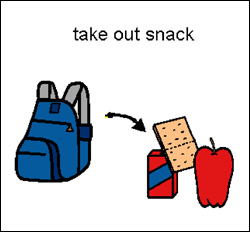




Putting Pants On Sequence
Many children need support when learning new skills. Breaking a skill down into smaller steps can help a child learn one step at a time. The number of steps a skill or task is broken into depends on the needs of your child.
You may want to provide your child with a visual sequence. This is basically a series of pictures showing the steps that are necessary to complete a task. You can use real photos, line drawings, or picture symbols to create your own visuals. When using a visual sequence, post it at your child’s eye level, point to the picture, and read the step out loud before completing the action.
You can also use the pictures to create a sequencing game of your own. Simply print the pictures, cut them out, and have your child practise putting the steps in order. You can also create a matching game by making two copies of the sequence. Glue one copy to a piece of construction paper in the correct order and have your child use the other set match the cards.
Here’s an example of ‘putting on a pair of pants’ sequence






* Note: from 1 to 6 years, the child can be seated; for 7 and older, the child is standing
Washing My Hands Sequence
Many children need support when learning new skills. Breaking a skill down into smaller steps can help a child learn one step at a time. The number of steps a skill or task is broken into depends on the needs of your child.
You may want to provide your child with a visual sequence. This is basically a series of pictures showing the steps that are necessary to complete a task. You can use real photos, line drawings, or picture symbols. When using a visual sequence, post it at your child’s eye level, point to the picture, and read the step out loud before completing the action. You can also use the pictures to create a sequencing game of your own. Simply print the pictures, cut them out, and have your child practise putting the steps in order. You can also create a matching game by making two copies of the sequence. Glue one copy to a piece of construction paper in the correct order and have your child use the other set to match the cards.
Teach your child to wash his hands after he uses the washroom, before and after eating, and after messy activities. The washroom at your child’s school or child care will be different from the one he is used to at home. You may have to show him how to use the soap dispenser and hand dryer. If the washroom at your child’s school uses paper towels, remind him to put them in the garbage when he is finished drying his hands.
Here’s an example of a ‘washing hands’ sequence





Winter Dressing Sequence
Many children need support when learning new skills. Breaking a skill down into smaller steps can help a child learn one step at a time. The number of steps a skill or task is broken into to depends on the needs of your child.
You may want to provide your child with a visual sequence. This is basically a series of pictures showing the steps that are necessary to complete a task. You can use real photos, line drawings, or picture symbols. When using a visual sequence, post it at your child’s eye level, point to the picture, and read the step out loud before completing the action.
You can also use the pictures to create a sequencing game of your own. Simply print the pictures, cut them out, and have your child practise putting the steps in order. You can also create a matching game by making two copies of the sequence. Glue one copy to a piece of construction paper in the correct order and have your child use the other set to match the cards.
Here’s an example of a ‘winter dressing’ sequence

